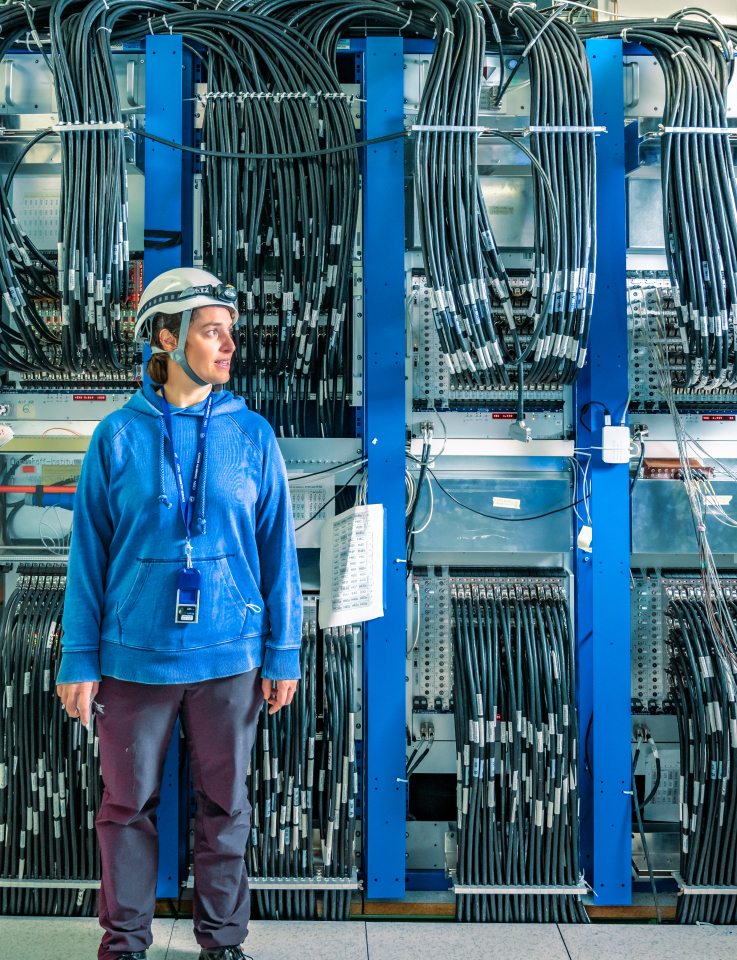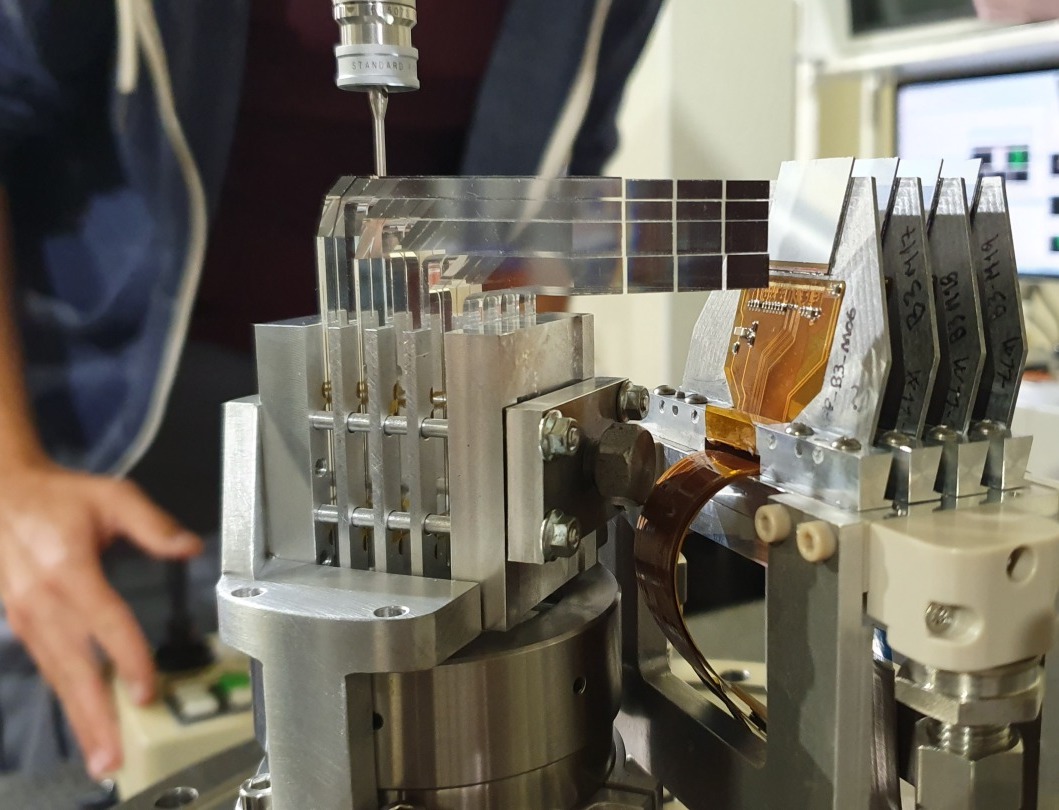
Long Shutdown 2
- node
- Long Shutdown 2
Upgrading the experiment for LHC Run 3
After several years of intense operation, the ATLAS Experiment entered its second maintenance period in December 2018 (called "Long Shutdown 2" or LS2). Over the course of 3.5 years, members of the Collaboration installed critical upgrades to the experiment and carried out maintenance work on its systems. Significant upgrades were also made to the LHC and its accelerator complex.
This incredibly productive period ran alongside continued analysis of LHC Run 2 data. Highlights of the activities carried out can be found below.
General LS2 resources:
- CERN: Digital Media Kit on LS2
- Video: ATLAS LS2 footage in 4K
- Video: LS2 upgrades to the LHC
- Photos: Final LS2 works in ATLAS
New Small Wheel Installation
The most iconic new additions to the ATLAS experiment are the New Small Wheel Detectors (NSW). Named in comparison to ATLAS’ 25-metre diamter “big wheel” detectors, they now sit on the inner layer of the forward muon spectrometer and outer layer of the ATLAS experiment, where they will be tracking muon particles for the next 20 years.
These new wheels aren’t only an upgrade for Run 3 of the LHC, they are also the first major installation for the High-Luminosity upgrade of the LHC (HL-LHC), scheduled to begin operation in 2029. Their installation follows nearly a decade of dedicated efforts by ATLAS members, who designed, constructed and assembled this high-tech muon detector from scratch.
The NSW detectors are at the forefront of design, using two innovative gaseous detector technologies: micromegas (MM) and small-strip thin-gap chambers (sTGC). These provide both fast and precise muon-tracking capabilities. The improved spatial resolution allowed by the NSW will be especially critical for the ATLAS “trigger”, the system that decides which collision events to store and which to discard. The trigger will rely on the NSW’s excellent resolution to confirm whether a particle originated from the interaction point, thus reducing our chances of saving data from unwanted background events.
Key Numbers
- 16 sectors per wheel
- 2 million MM readout channels
- 350,000 sTGC electronic readout channels
Learn more
- CERN Courier: Wheels in motion for ATLAS upgrade
- ATLAS: Detectors for a new era of ATLAS physics
- ATLAS: First ATLAS New Small Wheel nears completion
- Live Video: Live from the NSW inside ATLAS
- Videos: Building the ATLAS New Small Wheel, Unboxing a 100 Tonne Particle Detector, Timelapse: lowering NSW-A, Lowering of NSW-C (real time)
- Photos (installation): NSW-C Lowering, Movement of NSW-C, NSW-A Lowering, NSW removed from Support Frame, Unwrapping NSW-A
- Photos (construction): NSW Team with first completed wheel, Installation of final sector onto the NSW, First Completed Wheel, Construction of NSWs in 2021, Assembly of NSWs in 2020, Construction of Micromegas at Building 899 (BB5) and Small Strip Thin-gap Chambers at B180, Installation of first chamber in 2020, Views of the NSW assembly area
- Photos (other): Removal of original Small Wheel (2)
Liquid Argon Calorimeter Upgrades
The Liquid Argon (LAr) Calorimeter lies at the heart of the ATLAS experiment, measuring the energy of charged and neutral particles across a wide range of energies (from about 50 MeV (MIP) in a single cell to about 3 TeV). It plays a critical role in ATLAS’ online event-selection system – also known as the “trigger” – as it quickly provides the energy measurements used to select which collision events should be saved and studied.
New digital electronics will now improve trigger selection, providing a higher resolution and more granularity to the electromagnetic calorimeter’s trigger. The new front-end electronics increases tenfold the information available at the trigger level, improving the ability to reject jets while preserving electrons and photons.
The calorimeter uses a new, finer-granularity scheme called “Super Cells”, which provides information from each calorimeter layer. Since this upgrading to this scheme required a major – and potentially very disruptive – intervention in the data-taking chain, ATLAS researchers decided to incorporate these new elements while keeping the old “legacy” trigger system fully operational, and thus also revalidated the calorimeter’s original boards during LS2.
Key numbers
- 5000 new optical fibres
- 1524 Front-End readout Boards refurbished
- 124 new LAr Trigger Digitizer readout Boards installed
- 23.6 Tbps (Tera-bits per second) of data from the Super Cells
Learn more
New Muon Chambers Installation
New muon chambers – including 8 small-diameter Monitored Drift Tube (sMDT) modules and 16 next-generation Resistive Plate Chambers (RPC) – have been installed inside the experiment. These new detectors are capable of withstanding the higher rates and provide a robust standalone muon confirmation. Their installation into the ATLAS experiment improves the overall muon trigger coverage of ATLAS, which will be essential for HL-LHC operation
The new muon chambers are compact and are a first test for the future phase-2 installations for HL-LHC. These are the first RPC chambers in the inner layer of the muon spectrometer and sit in a region called BIS78. They will allow physicists to improve the precision of the momentum measurements of muons passing in these regions.
The new sMDT chambers feature smaller diameter tubes (15mm compared to 30mm of the original MDTs), providing an order of magnitude higher rate capability. This will be vital for the intense environment of HL-LHC.
Key numbers
- 8 new stations on Side A
- 15 mm diameter tubes in sMDTs
Learn more
ATLAS Trigger Upgrades
Collisions among proton bunches occur inside the ATLAS experiment up to 40 million times a second. Only a fraction of the collision events are valuable for research and the ATLAS detector must decide which events to store for analysis. This decision-making is done courtesy of the sophisticated Trigger and Data Acquisition System (TDAQ), which has upgraded hardware and software to spot a wider range of collision events while maintaining the same acceptance rate.
The significant improvements to the LAr calorimeter mentioned above increase the granularity of information used by the trigger. With better resolution, the trigger will be better able to reject background events. The calorimeter trigger now has modern large-scale FPGAs, allowing physicists to run more sophisticated algorithms to identify physics objects, and to calculate missing energy in the event with higher precision.
The New Small Wheel system and the BIS78 installations also mentioned above cover the boundary region between the barrel and end-cap part of the ATLAS detector. This improves the trigger’s ability to correctly identify muons and will reduce the rate by a factor of 2.
The software-based High Level Trigger (HLT) was completely rewritten in order to execute trigger algorithms within the multi-threaded software framework AthenaMT, sharing common features between the trigger software and the software used for physics analyses. These improvements will be especially important for Run 3 of the LHC, which will require significant HLT resources to be dedicated to computationally-intense particle tracking.
Learn more
- ATLAS: ATLAS event selection system readies for LHC Run 3
- ATLAS: Teaching established software new tricks
ATLAS Forward Proton (AFP) Detector Upgrades
The redesigned ATLAS Forward Proton (AFP) spectrometer sits on either side of the main ATLAS cavern, just over 200 metres downstream from the collision point. Its detectors are based on high-resolution tracking 3D pixel silicon technology and high-precision Time-of-Flight (ToF) quartz-Cherenkov detectors, which reach directly into the LHC beam pipe to only two millimetres from the proton beam itself.
In many LHC collisions, the colliding protons are not destroyed, but remain intact, still emitting some energy that will produce particles in the central ATLAS detector. The two protons will have lost only a few percent of their energy in the collision, and will be deflected by the LHC magnet more than the other non-interacting ones in the beam. They will be measured by the AFP spectrometer, giving the full information of the collision together with the measurements from the central detector.
The AFP ToF detector was redesigned during LS2, allowing it to be inserted into the LHC beamline while keeping the “time-of-flight” AFP photon-measuring devices (MCP-PMT) outside the Roman Pot vacuum. This improved design provides an easier environment for the AFP to operate in and gives physicists easier access to its electronics.
Key numbers
- 200 metres downstream from collision point
- 2 mm from LHC beam
Learn more
More LS2 Multimedia










